OAR Segmentation in CT for Treatment Planning in Radiation Therapy
Radiation Therapy requires careful treatment planning to achieve tumor control while minimizing the radiation delivered to organs at risk (OARs) — anatomical structures located close to the target volume. Treatment plans are defined following specific protocols by radiation oncologists and medical physicists to ensure that the prescribed dose is delivered to each volume. Dose data resulting from treatment planning enables the calculation of dose-volume histograms (DVH) on each volume of interest previously delineated by the radiation oncologist.
In our first work, we developed a deep learning-based segmentation approach for head and neck anatomy that uses a separated three-dimensional (3D) CNN architecture for delineating each independent structure. We trained and validated our segmentation approach on a dataset of 35 CT scans that include 6 segmented labels obtained from routine clinical head and neck RT treatment planning at Hospital General Universitario Gregorio Marañón (HGUGM) in Madrid. We also evaluated our approach on images from the MICCAI2015 head and neck challenge. We obtained DICE coefficients from 0.8 to 0.9 for brainstem, spinal cord, eyes and parotid glands.

Moreover, we have recently published a deep learning-based methodology to segment fifteen OARs exploiting a partially-labeled longitudinal database. Data was acquired from CLCC Eugène Marquis in Rennes, France, and included CT scans and segmented labels for 48 patients treated with head and neck radiotherapy. Our methodology comprised two steps. First, we used the available ground truth labels for each OAR to train a OAR-specific 3D UNet. These models were used to generate pseudo-labels for the missing contours. Finally, we trained a multi-class nnU-Net for finer OAR segmentation. Results were robust, with an average DICE score coefficient of 80.59%. We demonstrated the robustness of our method and its easy integration into the clinical RT workflow.
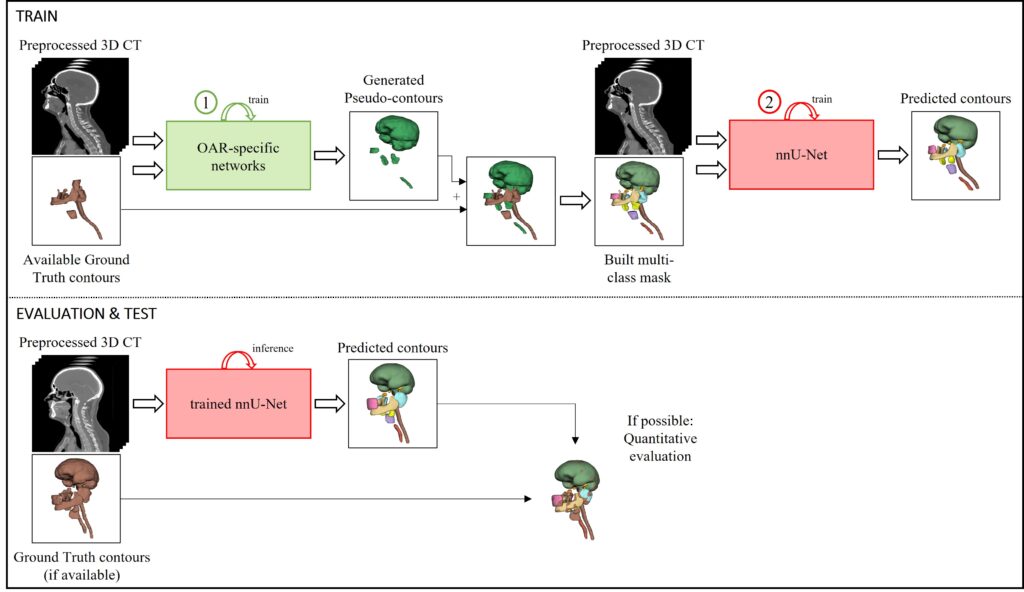
In the last months, we have presented a clinical evaluation of this results, a method to predict and classifiy segmentation uncertainty, and a comparison of the model’s performance with convolutional neural networks in ISBI 2023 (Cartagena de Indias, Colombia) and ESTRO 2023 (Vienna, Austria).
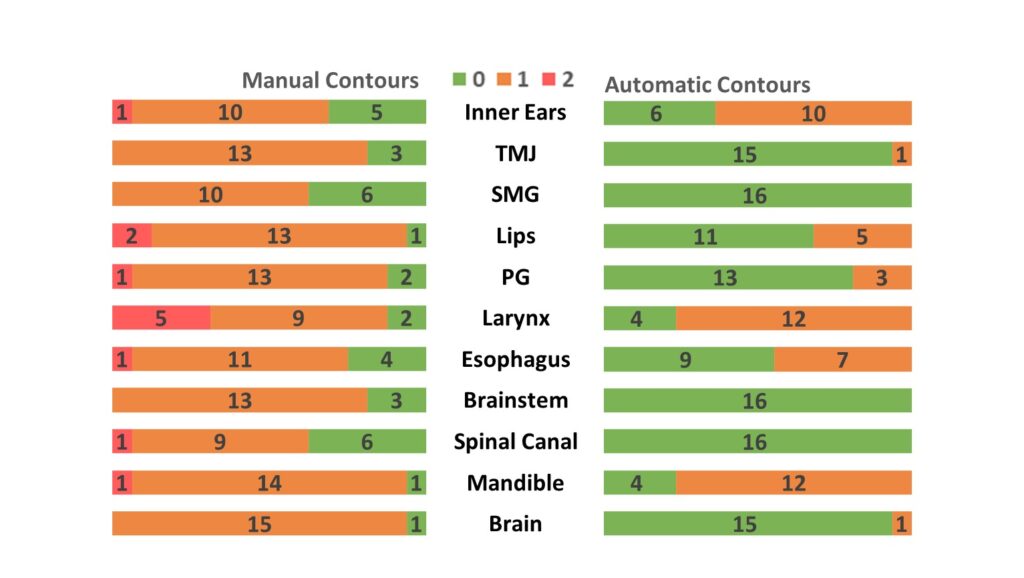

You can find all of our work in this field in the following contributions:
- L. Cubero, J. Castelli, R. de Crevoisier, O. Acosta, J. Pascau. Alternative DL segmentation approaches for clinical partially-labeled HN data: transformers or Unet? Poster discussion in ESTRO 2023, May 12-16, Vienna. Radiotherapy and Oncology, Vol 182, Sup 1, May 2023, S260-S261. [doi]
- L. Cubero, J. Serrano, J. Castelli, R. de Crevoisier, O. Acosta, J. Pascau. Exploring Uncertainty for Clinical Acceptability in Head and Neck Deep Learning-Based OAR Segmentation. Poster presentation in ISBI 2023, April 18-21, Cartagena de Indias. 2023 IEEE 20th International Symposium on Biomedical Imaging (ISBI 2023), April 2023
- Cubero, L.; Castelli, J.; Simon, A.; de Crevoisier, R.; Acosta, O.; Pascau, J. Deep Learning-Based Segmentation of Head and Neck Organs-at-Risk with Clinical Partially Labeled Data. Entropy 2022, 24, 1661. [doi]
- L. Cubero, J. Serrano, F. A. Calvo, A. Simon, J. Castelli, R. de Crevoisier, O. Acosta, J. Pascau. DL-based OAR delineation for Head and Neck Radiotherapy: accuracy versus computational resources. Poster in ESTRO 2022, May 6-10, Copenhaguen. Radiotherapy and Oncology, Vol 170, Sup 1, May 2022, S1425-S1426. [doi]
- Lucía Cubero, Antoine Simon, Joël Castelli, Renaud de Crevoisier, Javier Serrano, Óscar Acosta, Javier Pascau. Deep Learning-based Workflow to Speed Up Organ-at-Risk Segmentation in Head and Neck Radiotherapy. NVIDIA GTC Conference 2022. Watch online at: https://www.nvidia.com/en-us/on-demand/session/gtcspring22-p42480/
- M. Concepción-Brito, R. Moreta-Martinez, J. Serrano, D. García-Mato, M. García-Sevilla, J. Pascau. Segmentation of Organs at Risk in Head and Neck Radiation Therapy with 3D Convolutional Networks. In: CARS 2019 – Computer Assisted Radiology and Surgery Proceedings of the 33rd International Congress and Exhibition, Rennes, France, June 18–21, 2019. Int J CARS 14, 27–28 (2019). [doi] [UC3M Research Portal]
OAR Segmentation in CBCT for Adaptive Radiation Therapy
Cone beam computed tomography (CBCT) has become an essential tool in RT treatment delivery, primarily assisting in patient positioning and alignment with the planned treatment. The development of adaptive radiotherapy (ART) has further enhanced the clinical value of CBCT. ART is a personalized treatment strategy that adjusts the radiation plan during therapy to account for anatomical changes, such as weight loss and tumor or gland shrinkage, which can alter the dose distribution. CBCT provides intra-fraction imaging of tumors and OARs, allowing clinicians to identify possible deviations in anatomy and dose distribution that may trigger the need for offline or online treatment replanning.
In recent years, deep learning (DL) has achieved state-of-the-art results for OAR segmentation on CT. However, relatively little effort has been made to automate this process on CBCT, mainly due to their lower image quality and the scarcity of large, well-labeled datasets to train DL models. To address the existing gap in automatic HN OAR segmentation on CBCT, we have recently published a study to delineate 25 HN OARs combining an extensive, partially-labeled CT database with paired, unlabeled CBCT scans acquired during RT treatment.
Our workflow is summarized as:
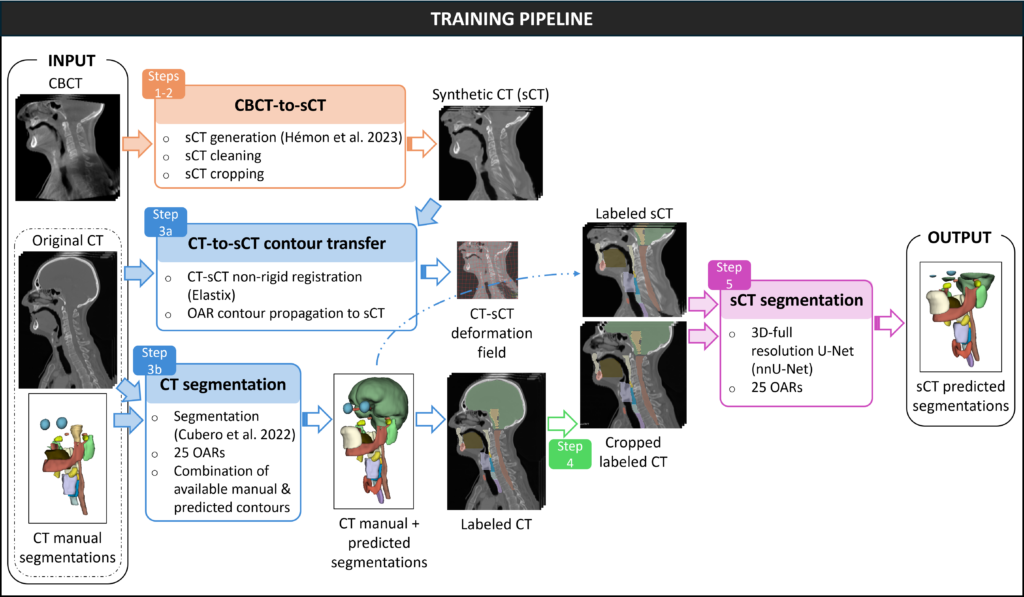

We obtained very accurate results. Two examples can be found in the following image, depicting the manual and predicted OAR segmentations on CT and CBCT.
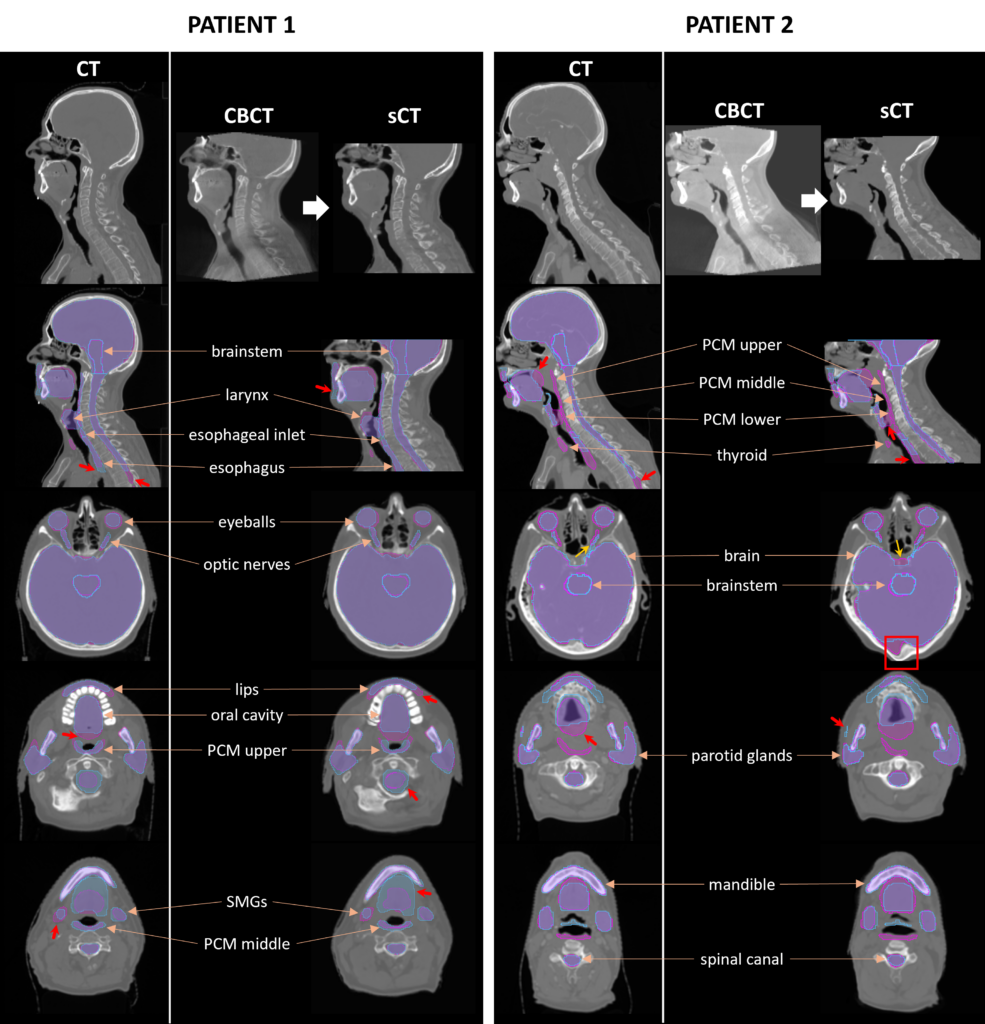
You can find this work in the following contribution:
- Cubero L, Hémon C, Barateau A, Catelli J, de Crevoisier R, Acosta O, Pascau J. Deep learning-based segmentation of head and neck organs at risk on CBCT images with dosimetric assessment for radiotherapy. Phys Med Biol. 2025 Mar 11;33:100704. [doi]
Personalized Planning in RadioTherapy (PerPlanRT)
Radiotherapy for prostate cancer (PC) involves irradiation not only of the target volume but also of portions of healthy neighboring Organs at Risk (OaR) such as bladder, rectum or penile bulb. RT-induced morbidity of sexual, urinary, or rectal nature can arise, impacting Quality of life (QoL). Predicting toxicities to devise personalized treatments with reduced RT-induced morbidity and maximized local control is a crucial question in RT.
PerPlanRT is a consortium including partners from different European countries (Spain, France, Italy) that will work together to devise innovative decision-making tools aimed at proposing integrated and feasible strategies for personalized RT in PC with reduced RT-induced toxicities (rectal, urinary, sexual) aimed at improving QoL.
Our group will focus on automatic methods that will contour not only Organs at Risk, but also those regions that have been identified as predictive for RT-induced toxicity. We are also working on accelerating image registration with Deep Learning to facilitate voxel-wise analysis.
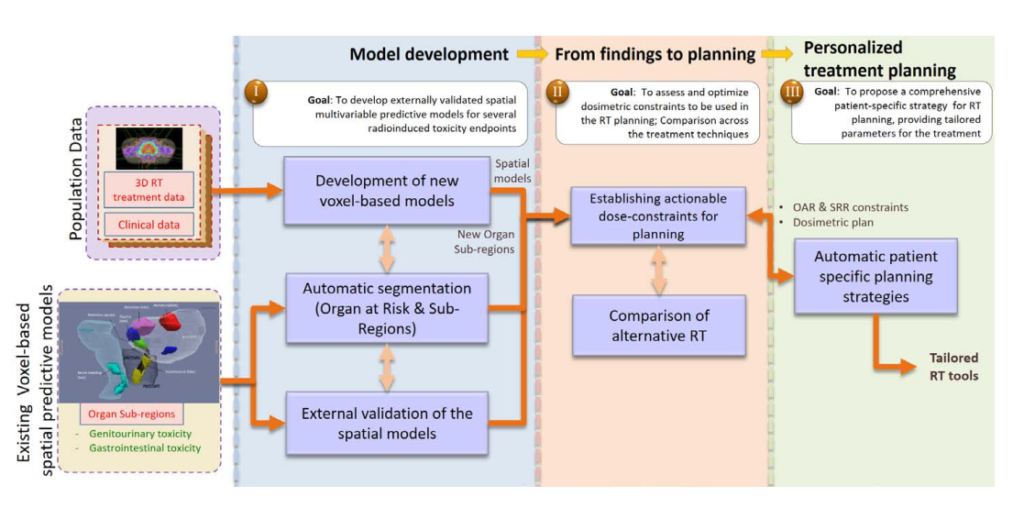
We have recently published a deep learning-based methodology to segment the intraprostatic urethra on CT images. This framework segments four organs at risk (prostate, bladder, rectum and seminal vesicles) from a volume of interest created from the CT image. Then, it uses the generated contours of the prostate and bladder to build their distance maps, to finally segment the intraprostatic urethra automatically. We have set up a freely-available library to use our methodology:
https://github.com/BSEL-UC3M/DLUS
Any questions, please do not hesitate to contact us 😉
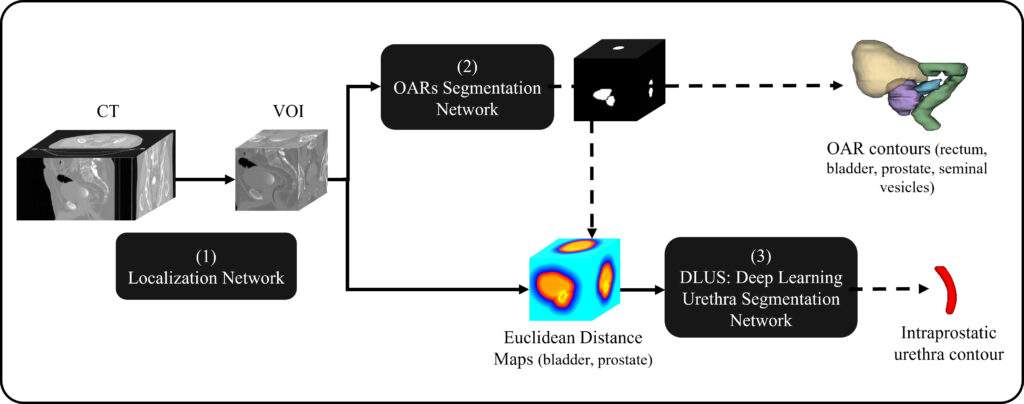
- L. Alborghetti, R. Castriconi, C. Sosa Marrero, A. Tudda, M.G. Ubeira-Gabellini, S. Broggi, J. Pascau, L. Cubero, C. Cozzarini, R. de Crevoisier, T. Rancati, O. Acosta, C. Fiorino. Late toxicity-associated patient-specific subregions in plan optimization for prostate cancer. Mini oral in ESTRO 2023, May 12-16, Vienna. Radiotherapy and Oncology, Vol 182, Sup 1, May 2023, S381-S382. [doi]
- Cubero L, García-Elcano L, Mylona E, Boue-Rafle A, Cozzarini C, Ubeira Gabellini MG, Rancati T, Fiorino C, de Crevoisier R, Acosta O, Pascau J. Deep learning-based segmentation of prostatic urethra on computed tomography scans for treatment planning. Phys Imaging Radiat Oncol. 2023 Mar 21;26:100431. [doi] – Impact Factor : (Q2)
The project started in April 2021 and will finish in 2024 and is supported by Instituto de Salud Carlos III (AC20-00102 and AC20-00123) and Asociación Española Contra el Cáncer under the frame of ERA PerMed.
- Coordinator: Oscar Acosta (Université de Rennes, France)
- Partners:
- Centre de Lutte contre le Cancer Eugène Marquis (CEM), Rennes, France.
- Fondazione IRCCS Istituto Nazionale dei Tumori (INT), Italy
- San Raffaele Scientific Institute-Milano, Italy
- Universidad Carlos III de Madrid (UC3M), Spain
- Clínica Universidad de Navarra, Spain
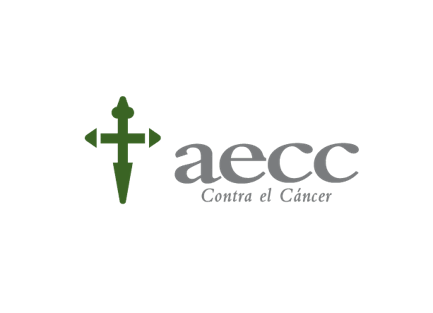


More information
- Asociación Española Contra el Cáncer. Information about PerPlanRT.
- Asociación Española Contra el Cáncer. Funded projects in Prostate Cancer.
- Asociación Española Contra el Cáncer. EraPerMed Funded Projects 2020.
- EraPerMed Newsletter. Funded projects JTC 2020.
